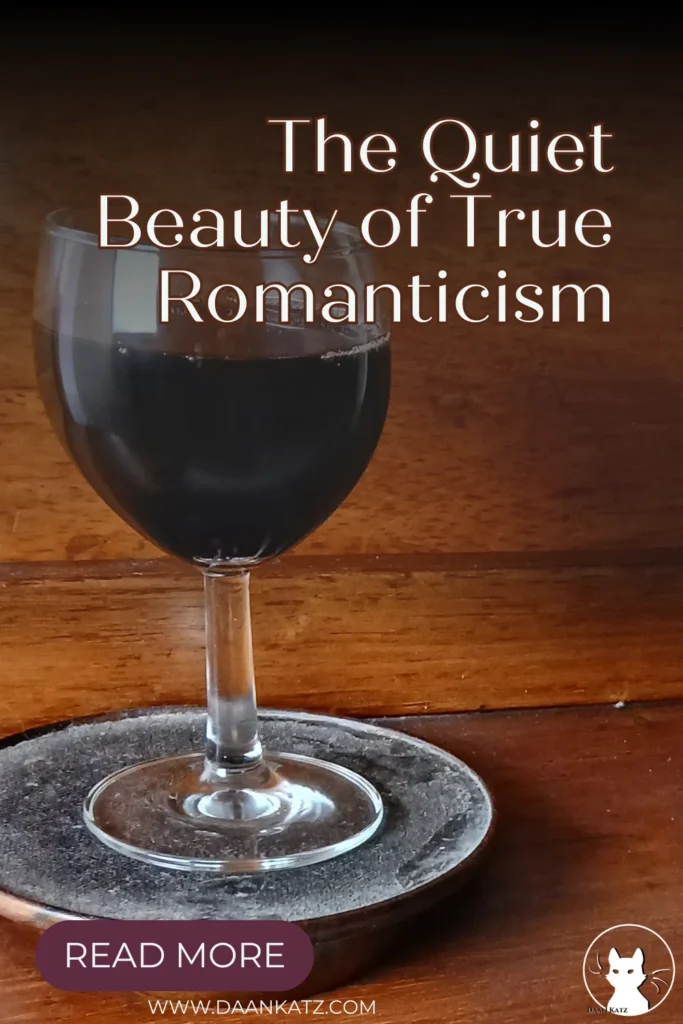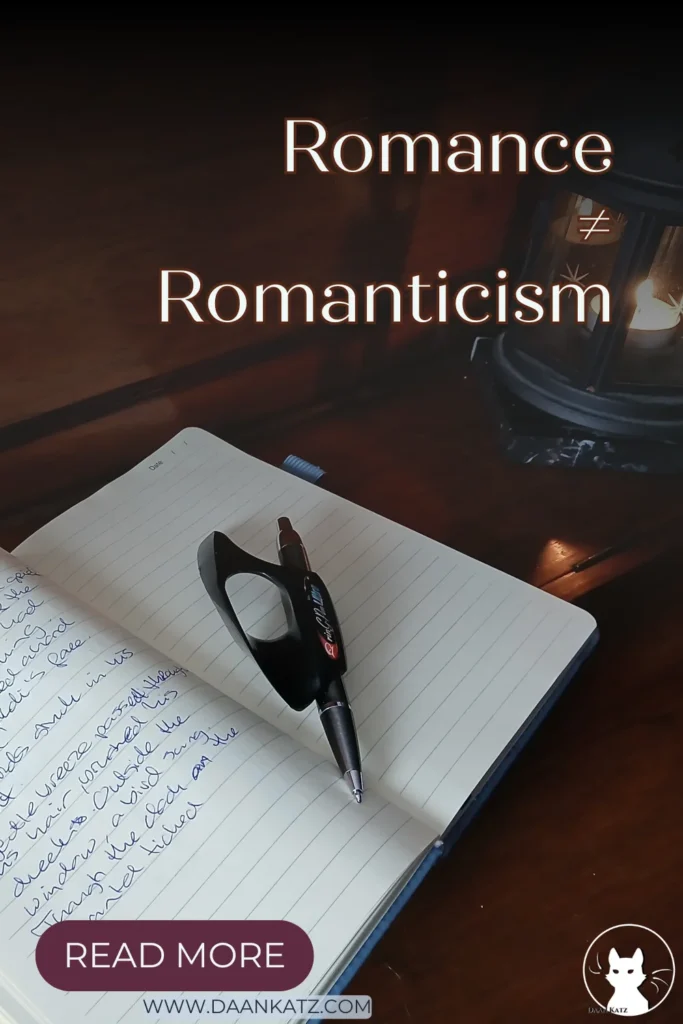True Romanticism: Romance Without Roses
Why Emotional Truth Matters More Than Sentimental Fantasy
I am the least romantic person on Earth.
At least, that’s what I thought, and by modern standards, that is certainly the case, but true romanticism isn’t the same as romance. Sincerity, vulnerability, and emotional truth: the courage to feel. Those are the key characteristics of historical Romanticism.
I’m Not a Romantic (At Least, Not the Kind You Think)
Roses are red,
violets are blue,
sugar is sweet,
and causes tooth decay.
I’ll admit it: I’m an aromantic brute who doesn’t care one bit for roses, diamonds, signet rings, tie pins, or handcrafted knives. Though I will admit to appreciating a good glass of fine wine.
But then again, who doesn’t?
Yet some people say that I’m actually a true romantic…
…not like in a romance novel, but more along the lines of Schubert and Goethe.

The Deceptions of Modern Romance
What we see here is the clash between modern Romance and true Romanticism, in the historical sense of the word.
Modern Romance (e.g., Harlequin Presents) has a distinct focus on superficial plot elements like wealth, status, glamorous settings, and dramatic conflicts. The characters experience intense feelings (often blown completely out of proportion), because… that’s what the formula demands.
This is what romance readers want and expect: to escape reality. To indulge in a fantasy where exaggerated dreams come true. And there’s nothing inherently wrong with that.
But I hate romance novels. If I need to write a romance into my story (because the storyline demands it—as was the case in Night’s Reign) I will do so as succinctly as I can get away with. Which doesn’t always sit well with readers who expect ‘more’ from fictional romances.
The romance didn’t really work for me. Not that there’s something wrong with it, because it does seem real. A messy imperfect clumsy kind of real, that real people might experience.
It’s just that it felt a bit muted, so to speak.
As a hopeless romantic myself, I want more. I want all the feels in their messy glory. I want the heartache of a slow burn and the hot fire of passion. And I didn’t feel these here.
Read the full review by Laura, on Goodreads.
Laura’s feelings are perfectly valid—and it highlights the difference between romance as fantasy and Romanticism as truth. I’m sure she’s not the only one who feels this way. But the fact remains: I just can’t write that kind of romance. Nor do I want to. It’s contrary to my nature.
Thankfully others, like John Mauro, who writes for GrimDark Magazine, seem quite happy with the way I wrote this romance.
There is also some romance, which is incorporated in a realistic and tasteful fashion.
Read John Mauro’s review in GrimDark Magazine
Clearly, there are still readers (you might be one of them) who feel the same: that love stories don’t have to be sizzling hot and full of over-the-top feelings.
True Romanticism as a Historical and Artistic Movement
Historically, Romanticism didn’t shoot for polished perfection. Rather, its goal was to express authentic human emotion in art, literature, and music. Genuine and without pretence.
This is where authentic romance dwells, and whispers in small everyday gestures. Here, romance is genuine, organic, and nuanced. It might even be ambiguous. It’s all these intricate, confusing, and seemingly insignificant details that make it real—and lasting.
That’s the romance between Niels and Bel, in Night’s Reign: a clumsy kind of love. Just two insecure people, afraid to love again—each for their own reasons.
There’s no dramatic misunderstandings leading to explosive breakups—though there are misunderstandings, and plenty of them, but they don’t tear the two of them apart.
What we do see, is the subtle beauty of two kindred souls feeling their way towards each other. Slowly starting to trust both themselves and the other.
That’s what the reader gets: an intimate peek into these characters’ deepest feelings.
The Emotional Truth of Schubert’s Art (and How it Relates to my Writing)
Schubert’s art is the embodiment of true Romanticism: deeply felt, and never relying on mere spectacle. It’s this kind of emotional truth that I aim to achieve in my work as well.
When I think about Romanticism, these two lines from ‘Klärchens Lied’, by Johann Wolfgang von Goethe immediately spring to mind:
Himmelhoch jauchzend, Zum Tode betrübt.
Why? Because these two lines (rejoicing to the heavens, dejected unto death) capture the essence of true Romanticism.
The Romantic era was a time of extremes. The French Revolution had not brought the promised ‘Liberty, Equality, Fraternity’, but rather disillusionment, blood, and a widening divide between dream and reality.
People despaired, and felt they could no longer trust monarchies, churches, or guilds. That left only the self. Authenticity, inner truth, and personal experience became the cornerstones of their lives.
But there was more: industrialisation brought urbanisation. Cities grew and overtook the countryside. People felt displaced—and scared. They longed for the ‘good old days’ when life was simple and in tune with nature.
And that still wasn’t all, but I think you get the picture. (And doesn’t it feel frightfully much like today’s world?)
That was the world in which Schubert lived and wrote over 1,500 works, including more than 600 Lieder (art songs) to lyrics of a.o. Goethe, Friedrich Schiller, Heinrich Heine, and Wilhelm Müller.

These achingly beautiful Lieder, typically set in a pastoral environment, and brimming with deeply felt emotion, are close to my heart—both as a writer and as a classically trained singer.
When I sing ‘Die schöne Müllerin’ or ‘Winterreise’, I don’t just sing words set to music. I experience the young man’s heartache, feel the snow crunch beneath my feet, wonder at the tears that freeze on my cheeks…
It’s this music that also influences my writing in more ways, and deeper, than I can even begin to explain. But you might feel it when you read my poems, or get caught in the tangled webs of my fiction.
Perhaps that’s what true Romanticism really is: the quiet persistence of feeling, sung softly beneath all the noise.
Like this post? Pin it!




